Foreign tourists often neglect Western Australia – which is understandable, as its capital, Perth, is one of the most secluded cities in the world! But if you can make your way to the Sunset Coast, you’ll find mesmerizing nature, ancient forests, grand mountains, friendly locals, and some of the world’s best beaches.
You have a lot of ground to cover if you’re planning a trip to Western Australia, which is the second-largest state in the world. That’s where we at Road Affair come in. We’ve done all the research and narrowed down the best attractions to plan the ultimate road trip of South Western Australia.
If you only have one week in Western Australia, this is the itinerary for you. This road trip will take you to world-class wineries, up one of the tallest mountains in Western Australia, and to some of the best beaches. In other words, there’s something for everyone in this South Western Australia itinerary! You can take the road trip in the vehicle of your choice, but the best way to explore the beautifully remote countryside is by renting a campervan in Western Australia.
Best Time to Take a Road Trip in South Western Australia
The best time to take a road trip around South Western Australia depends on how you’d like to travel and how well you handle the heat. Let’s start by outlining the seasons in Australia, which – just like the side of the road Aussies drive on – are opposite from those of North America. For instance, winter is June to August. You won’t find any snow during these months, but the weather tends to be damp and rainy, with an average temperature of around 57 degrees Fahrenheit (14 degrees Celsius).
Western Australia’s spring is September to November, bringing warmer temperatures and much less rain, with the average high being around 72 F (22 C). Summer comes just in time for Christmas, lasting from December to February, with an average temperature of 86 F (30 C) and very low rainfall. Autumn, March to May, sees a few more occasional showers and an average temperature of around 79 F (26 C). Keep these temperatures in mind if you plan on camping!
If you want to tour South Western Australia by car when the country is in full swing, it’s best to visit in summer (again, that’s winter for us North Americans!), when the weather is hot, the kids are out of school, and the families are out on holiday. Of course, summer also brings many more events, which means busier attractions, full campgrounds, and limited accommodations.
If you want to enjoy warmer weather but avoid the biggest crowds, consider visiting Western Australia in the autumn or spring. With families back at work and school, attractions are less busy, while the weather is still nice enough for outdoor activities. The best month for a budget-friendly trip is May, when many attractions and campgrounds offer discounts.

How to Get Around Western Australia
While Perth has great public transit, you’ll have to drive yourself around the rest of Western Australia. If you want to experience a classic Australia road trip, consider renting a campervan, which lets you stay out in the wilderness without returning to a hotel at the end of each day. You can even camp on several of the beaches for free!
Of course, you can also complete this road trip by car, staying in Airbnbs, hotels, or hostels along the way. You probably won’t find lodgings close to some of the attractions on this itinerary, though, so you’ll have a bit more driving to do. If you do take a car, we highly recommend booking through Rentalcars.com, which automatically filters hundreds of sites to get you the guaranteed lowest price on your rental!
Remember that driving in Western Australia (and throughout the country) is done on the left side of the road. Make sure to go no faster than the posted speed limit, as there are lots of speed cameras in Western Australia. Also, keep an eye out for kangaroos around dusk and dawn, when these nocturnal creatures are on the road the most.
Best of South Western Australia: 1-Week Road Trip Itinerary From Perth
This itinerary will show you the best of South Western Australia. You’ll have the chance to see plenty of the country’s iconic wildlife (such as kangaroos and emus), some unique attractions, and even small-town Australia.
However, before diving into the details of this one-week road trip, we want to remind you to purchase travel insurance. You never know what could happen on a road trip, and trust us – it’s better to be covered than strung up in a hospital bed with a broken leg and thousands of dollars in medical bills. As Stephen King said in Duma Key, “If you want to play, you gotta pay.” In other words, it’s wise to pay for coverage so that you can play on holiday without stress! SafetyWing offers travel insurance for as low as $10 a week, making it a no-brainer. You can get a quick, nonbinding quote below:
Now that the planning details are sorted, let’s make like a kangaroo and jump into this itinerary!

Day 1: Perth to Stirling Range National Park
You’ll do the most driving on the first day of this road trip, when you’ll still have the stamina for it! You’ll also have plenty of time for the long drive, as there aren’t many attractions to see on day one. Make your way south out of Perth onto Albany Highway, and then you’ll pretty much have a straight shot all the way down to Stirling Range National Park. The drive takes just under five hours, and you’ll get to see a lot of farms and forests along the way.
If you bring little ones on this trip, consider stopping about three hours into the journey at Giant Ram Park, where the kids can run around the playground and you can snap a family picture in front of one of the many random giant statues you’ll find in Australia. Another great stop is Mount Barker Country Bakery. This diner in the quaint town of Mount Barker is known for its delicious meat pies – a classic Aussie lunch that’s well worth going 10 minutes out of your way.
We recommend Stirling Range National Park as your final destination for day one, as it’s where you’ll find the second-highest peak in Western Australia, Bluff Knoll. This is easily the most popular hike in South Western Australia, as it offers unparalleled 360-degree views of the surrounding area, making it the ideal sunrise hike to start off your second day.
It’s best to stop for the night near the Bluff Knoll trailhead so that you can sleep in a bit before the hike. Alternatively, you could drive for another hour to stay overnight in Albany, but you’ll have to get up even earlier to drive back to the trailhead.
Best places to stay near Bluff Knoll, Stirling Range National Park:
- Campground and cabins: Stirling Range Retreat
- Hotel: Kendenup Cottages & Lodge
- Airbnb: Yardup Cottage

Day 2: Bluff Knoll to Albany
You’ll kick off your second day of this self-drive tour of Western Australia with a memorable sunrise hike up Stirling Range National Park’s highest peak. Before you drive the 15 minutes (if you’re leaving from Stirling Range Retreat) to the Bluff Knoll trailhead, make sure you have all the necessary equipment for the hike. Since you’ll be hiking up to the peak in the dark, you’ll need a headlamp or flashlight. You can use your phone as a light, but you’ll have to hold it the whole time, and it could drain your battery (which is no bueno for taking well-earned pictures at the top!). We also recommend wearing good hiking shoes and bringing lots of water and some hiking snacks. If you want to get fancy, you could even bring a jug of coffee to share while you watch the sun peek over the horizon.
The Bluff Knoll Summit Trail takes three to four hours for the full hike (about 1.5 hours both ways), depending on your fitness level. It’s a well-marked trail and relatively steep, with an elevation gain of 641 meters. (We’re pretty sure Led Zeppelin wrote “Stairway to Heaven” about this trail, but don’t quote us on that.) Check what time sunrise is the night before, and give yourself at least two hours to hike up beforehand so you can watch the whole sunrise.
After the hike, you’ll probably be hankering for something to eat and drink. At the end of Bluff Knoll Road, just before the turn onto Chester Pass Road, you’ll see The Bluff Knoll Cafe on the right-hand side. Here, you can grab breakfast and a coffee (or beer – you’ve earned it, after all!). The owners are very friendly and also sell souvenir T-shirts and other trinkets to commemorate this unforgettable hike.
Your next destination is the beautiful coastal town of Albany, roughly an hour’s drive from Stirling Range National Park. Spend the afternoon learning about one of the area’s most important industries at Albany’s Historic Whaling Station. Located on the site of the old Cheynes Beach Whaling Station (Australia’s final whaling station), this fantastic attraction is the only museum of its kind in the world. It features several interactive exhibits, a historic whaling boat, whale skeletons, and much more. You’ll hear stories from families and ex-whalers on the importance of the industry but also how Greenpeace and other environmental groups came to save the whales. You could easily spend two hours exploring the old whaling station!
A ticket to Albany’s Historic Whaling Station also includes entry to the Australian Wildlife Park next door. Here, you can get up close and personal with some iconic Australian wildlife, including snakes, kangaroos, and wombats! If you feel like going for a swim or beach walk after a tour of the museum, head down the road to Misery Beach.
Best places to stay in Albany:
- Free overnight campervan parking: Lot at Misery Beach
- Campground: Tasman Holiday Parks
- Hotel: The Beach House at Bayside
- Airbnb: Garden guesthouse

Day 3: Albany to William Bay National Park
On the third day of your trip, you’ll head out for another incredible hike along Bald Head near Frenchman Bay across the water from Albany. This well-marked trail starts at the parking lot on Bald Head Road. The trek takes you along a path mostly covered with boardwalks, allowing you to enjoy the panoramic views of the peninsula and bays on either side. It leads to an open rock area that many confuse for the end of the trail, but don’t be fooled! Painted arrows on the ground and cairns will lead you to the next portions of the trail.
The hike is 7.5 miles out and back, taking about 4.5 hours, so you’ll need good hiking shoes, snacks, and plenty of water! Also bring your swimsuit so you can enjoy a dip in Isthmus Bay, which is just a 10-minute detour from the trail.
After your morning hike around Bald Head, make your way west out of Albany toward the stunning white beaches of William Bay National Park. Along the way, you’ll pass a few breweries and distilleries. For a refreshing pint, stop at Wilson Brewing Co. If beer isn’t your thing, stop at The Dam Denmark. This restaurant and distillery offers fantastic seltzer sampler boards, along with cannabis-infused liquors for you to enjoy with food while looking out at a large pond. It also has a fantastic enclosed playground for little ones to enjoy while the adults partake in a tipple.

Once you’ve wet your whistle with a drink or two (maybe even three, if you’re not driving), make your way to Elephant Rocks in William Bay National Park. This beach is one of the most popular spots in Western Australia for a good reason. The giant rocks overlooking the Great Australian Bight resemble a herd of elephants splashing in the water. Wander around the rocky formations and make the short trek up to the lookout point for a better view of the surrounding nature.
Once you’ve snapped enough pictures of this iconic landmark, walk a few minutes to reach Greens Pool (which shares a parking lot with Elephant Rocks). This is easily one of the best beaches in Western Australia, featuring stunning turquoise waters and incredibly clean white sand. Enjoy an afternoon of sunbathing and splashing around, or bring snorkeling gear to explore the rocky formations.
Best places to stay near Elephant Rocks, William Bay National Park:
- Free overnight campervan parking: Lot at Ocean Beach
- Campground: Boat Harbour Camp
- Hotel: Karri Aura
- Airbnb: Greens Pool Retreat

Day 4: William Bay to Pemberton
The fourth day of this road trip will take you away from the beaches and into the ancient forests of Walpole-Nornalup National Park. Set your GPS for the Valley of the Giants Treetop Walk, which is a 30-minute drive from William Bay. You’ll get to walk among the tops of giant 400-year-old red tingle trees (part of the eucalyptus family), which only grow in this space of roughly 6,000 hectares.
The canopy walk is 40 meters above the forest floor on a 600-meter-long suspension bridge, offering you an unparalleled bird’s-eye view of the surrounding nature. This path isn’t for the faint of heart, though, as the bridge does sway while you walk. Regardless, we encourage you to challenge yourself and complete this scenic treetop walk!
After the canopy walk, you’ll follow the trail to the Ancient Empire. On this beautiful forest path, you’ll pass massive red tingle trees and plants that date back to when Australia joined Antarctica, New Zealand, and India as part of the Gondwana continent (65 million years ago)! It offers some incredible photo opportunities as well, with spots where you can walk into hollow red tingles.
Once you’ve completed both trails, which should only take about an hour, get your bum back on the road and continue west to Pemberton. It’s roughly a two-hour drive, but take your time and enjoy the scenic forests of karri trees – one of the world’s tallest hardwood species, found only in this region of Australia – and rivers along the way.
This next attraction is not suitable for those afraid of heights. In the 1930s and ’40s, Pemberton residents constructed treetop lookout platforms so they could spot wildfires in the distance. The last remaining fire lookout is on the Gloucester Tree, with steel pegs spiraling 41 meters up the trunk to form a ladder you can climb. The tree is sometimes closed for repairs, though, so check the official website before going.
If the Gloucester Tree is closed, you can most likely climb the Dave Evans Bicentennial Tree in Warren National Park, which is just a 15-minute drive from Pemberton. This tree’s platform wasn’t one of the original fire lookouts but was built as part of Australia’s bicentennial celebrations in the ’80s. You can climb 65 meters up the tree to experience a panoramic view of the surrounding karri forest.
We highly recommend staying at RAC Karri Valley Resort in Beedelup, where you’ll find log cabins and camping spots with electricity. Spend the rest of your afternoon partaking in the resort’s fantastic amenities, which include a looped hiking trail to Beedelup Falls, a BMX track, pingpong tables, tennis courts, a minigolf course, and direct access to Lake Beedelup. In the evening, you can enjoy dinner at The Lakeside Restaurant.
Other places to stay near Pemberton:
- Campground and cabins: Fonty’s Pool Caravan Park and Chalets
- Hotel: Jaspers Cabins
- Airbnb: Rosebank Cottage
Insider Tip: It’s possible to find free overnight campervan parking along Vasse Highway on your way north from Pemberton. Look for rest areas that allow roadside camping.

Day 5: Pemberton to Margaret River
Wake up and make your way to one of the best vacation towns in Western Australia! Margaret River, which is just a 1.5-hour drive from Pemberton, is known for its excellent surf spots, ancient caves, and world-class wineries. In fact, it’s won more awards as a fine wine region than any other town in Australia! Of course, there are various other attractions and tours to experience in this lovely small town, making it a popular destination from Perth. Accommodations often sell out during the busy seasons, so book well in advance!
On the way to Margaret River, stop in Boranup to explore one of the most popular caves in the region, Lake Cave. You can see ancient stalactites and incredible underground formations on a 30-minute guided tour of Lake Cave.
From Boranup, it’s less than a 20-minute drive to Margaret River, where you have several options for afternoon activities. If you’re itching to hit the waves, take surfing lessons at Margaret River Surfing Academy or rent a board at Surfers Point. This iconic surfing spot is one of only two Australian stops on the World Surf League Championship Tour. If you visit near the end of April, you can even watch the event!

A unique family-friendly attraction is A Maze’n Margaret River, which features an 18-hole minigolf course, beautiful gardens, giant games and puzzles, and a large hedge maze that even adults easily get lost in. Other activities in town include shopping at the main street’s artistic boutiques, browsing the stalls at the Margaret River Farmers’ Market (on Saturdays only), and sampling a tipple at either Margaret River Distilling Co. or Margaret River Brewhouse.
Best places to stay in Margaret River:
- Free overnight campervan parking: Lot on Gas Bay Road
- Campground and cabins: Riverview Tourist Park
- Hotel: Prideau’s of Margaret River
- Airbnb: Central apartment for two
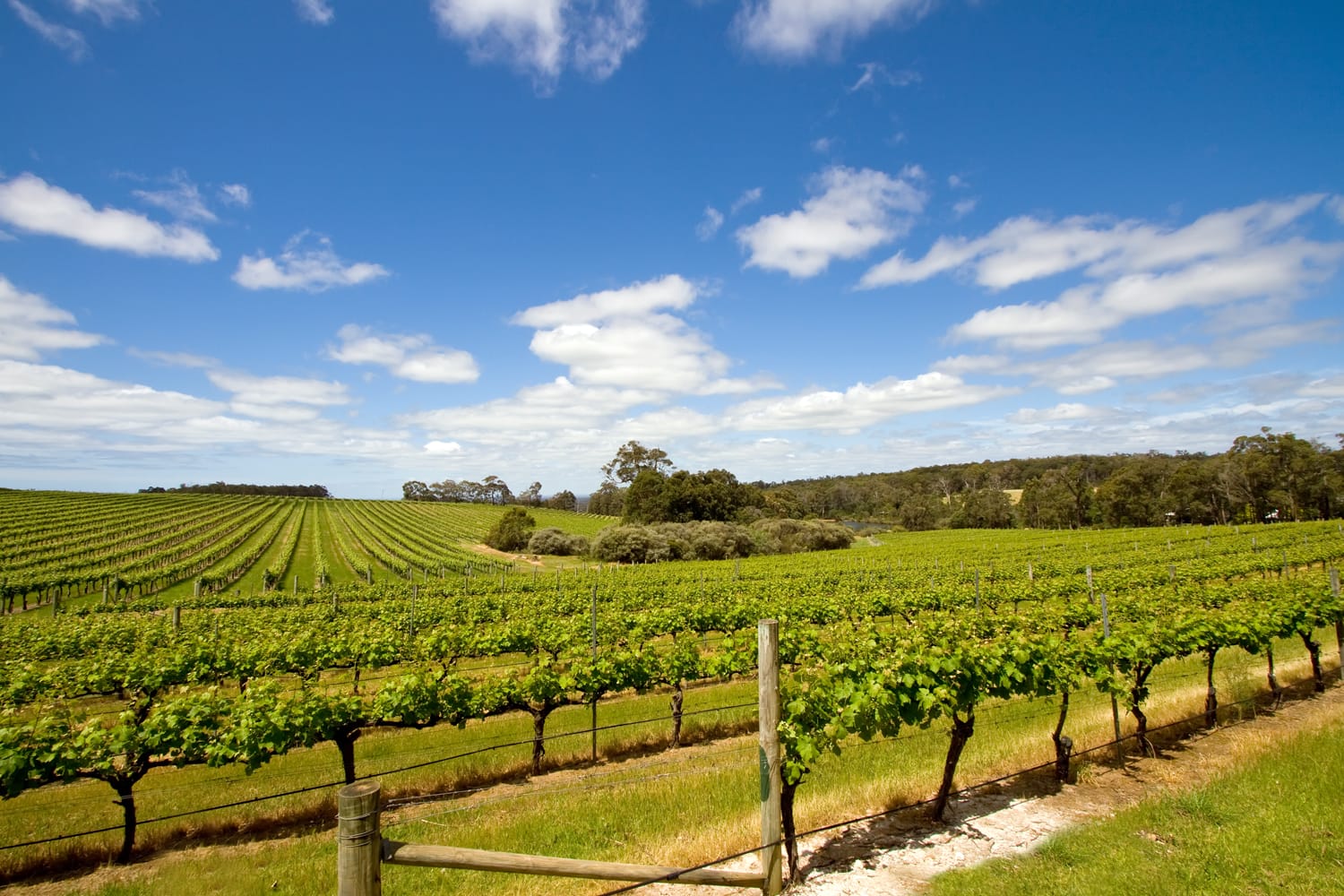
Day 6: Margaret River
There are endless activities available in Margaret River, so today’s agenda is up to you! To give you some ideas, though, we’ll list the best tours to take here.
With all the talk about this region’s fine wine, you may well want to sample it for yourself – or perhaps immerse yourself with a full-day tour of the wineries! Consider booking a guided tour from Margaret River so that you don’t have to worry about drinking and driving. We highly recommend this guided tour of the Margaret River wine region. It includes transportation, snacks, wine tasting at three vineyards, a gourmet lunch with wine pairings, and a chance to make your own wine! If a full day of wineries sounds like too much for you, a great alternative is this half-day guided wine tour of Margaret River. You’ll get to visit two wineries and enjoy afternoon tea with biscuits.
Of course, Margaret River offers more than just wine. The area has some fantastic spots for paddle activities and outstanding off-road trails. If you want to combine both activities, consider booking this five-hour canoe and Jeep tour with wine and lunch. You’ll get to canoe down the town’s namesake river, sample local honey, hike along the Wilyabrup Sea Cliffs, and visit Yalgardup Falls on a Jeep safari.
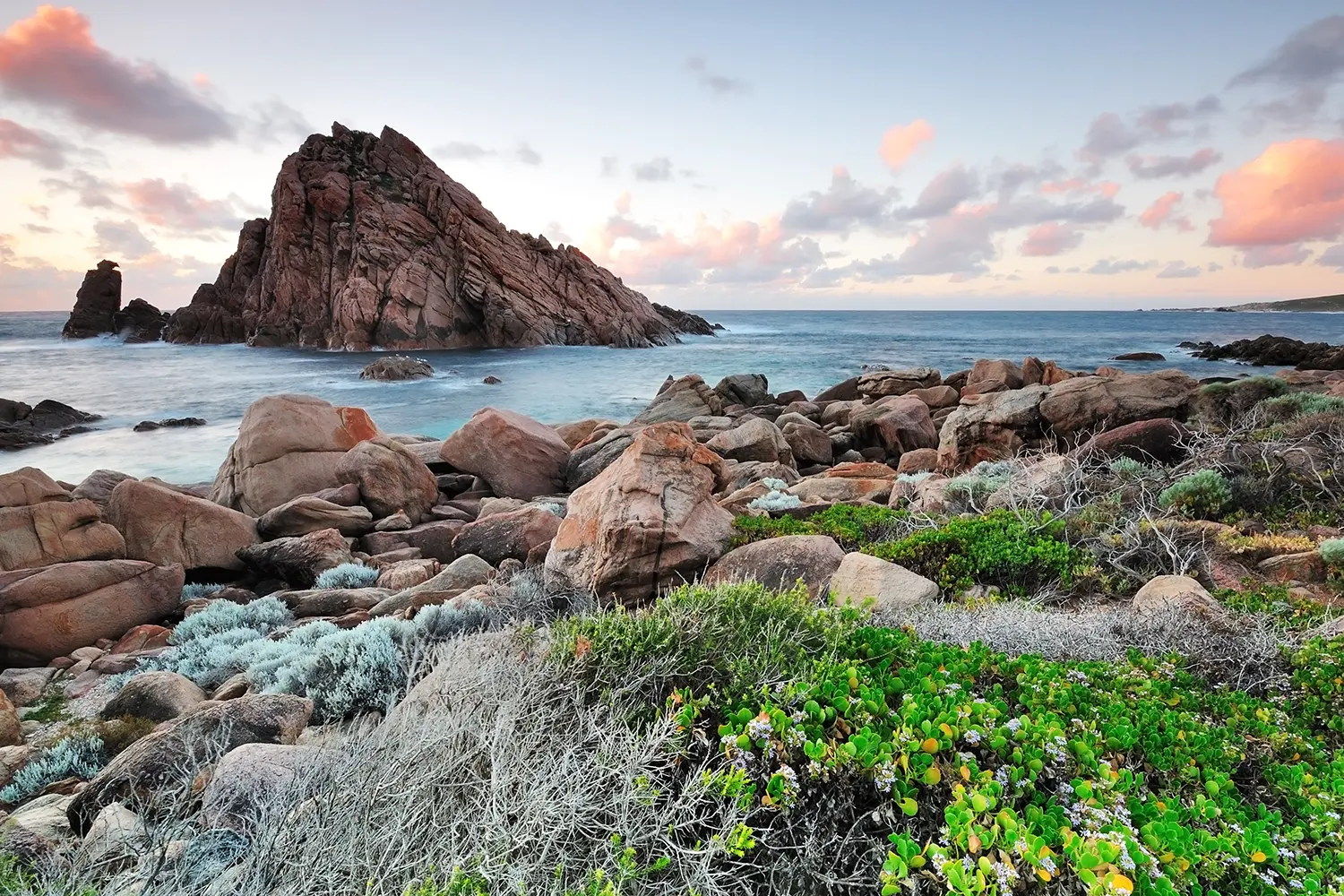
Day 7: Margaret River to Perth
On the final morning of your road trip, enjoy breakfast in Margaret River. We recommend stopping somewhere like Margaret River Bakery or Drift Cafe for a classic Australian sausage roll!
Once you’re well fed and caffeinated, drive 30 minutes north to Quinninup Falls. This stunning waterfall is best to visit in the wintertime, when the rains bring it roaring to life. It’s also of great cultural importance to the local Aboriginal tribe of the Wadandi (Saltwater) people, so please treat the land with respect.
The hike to Quinninup Falls and back takes roughly an hour and a half. It’s an incredibly scenic walk that will take you along the coast and onto a secluded beach. Bring a swimsuit if you want to take a dip in the ocean!
After your morning waterfall hike, continue north to the Injidup Natural Spa. These tidal pools are fantastic for snorkeling, so bring your gear! You can also climb over the rocks and watch the waves crash or simply kick back to work on your tan.

Once you’ve cooled off in the water, head north to the Busselton Jetty. This is the largest wooden jetty (a type of pier or dock that acts as a tidal barrier) in the Southern Hemisphere, measuring 1.8 kilometers (just over a mile) long. You can actually take a train from one end to the other!
Even cooler is the 8-meter-deep Underwater Observatory at the end of the jetty, which is one of only six natural aquariums in the world. To get the most out of this unique attraction, we recommend booking the full observatory tour. You’ll get to see and learn about over 300 species that call these waters home on this tour, which lasts an hour and 45 minutes. The train ride to the observatory (included in the tour price) takes 45 minutes, with hourly departures from 10 a.m. to 4 p.m.
Once you’ve explored the Busselton Jetty, grab a bite at one of the restaurants nearby, then head back to Perth via Bussell Highway. The journey should take approximately 2.5 hours, depending on traffic. Don’t drive too fast, as there are several speed cameras along the way!
There you have it – the ultimate South Western Australia road trip itinerary that you can do in one week! Whether you’re most interested in seeing native animals, splashing around at world-class beaches, hiking to waterfalls, or touring wineries, we’re positive you’ll have an absolute blast! All you have to do now is tell your work to shove off so you can enjoy your road trip in peace.
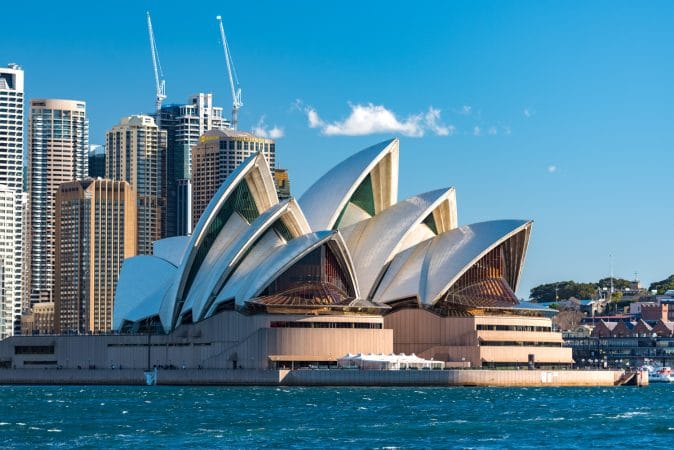
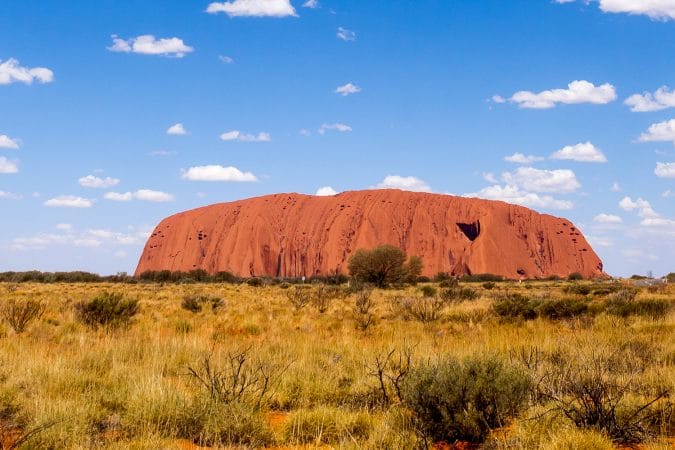
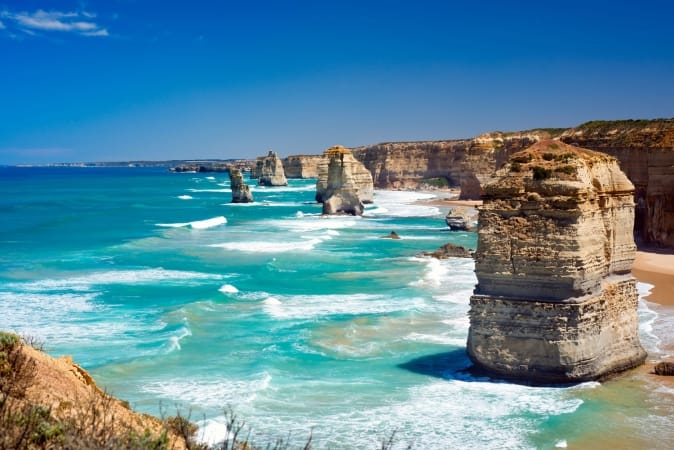
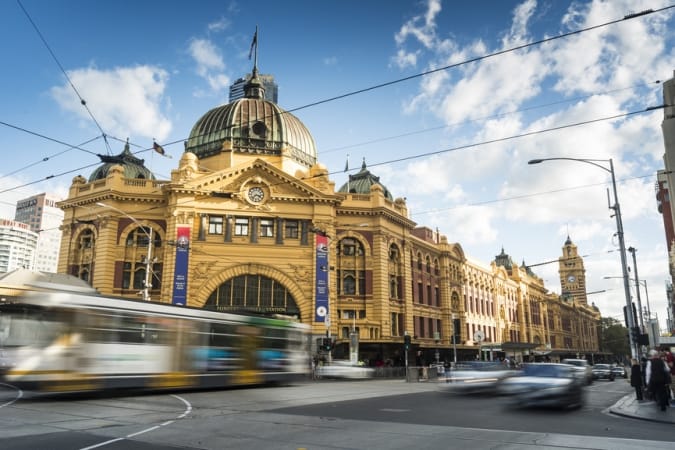
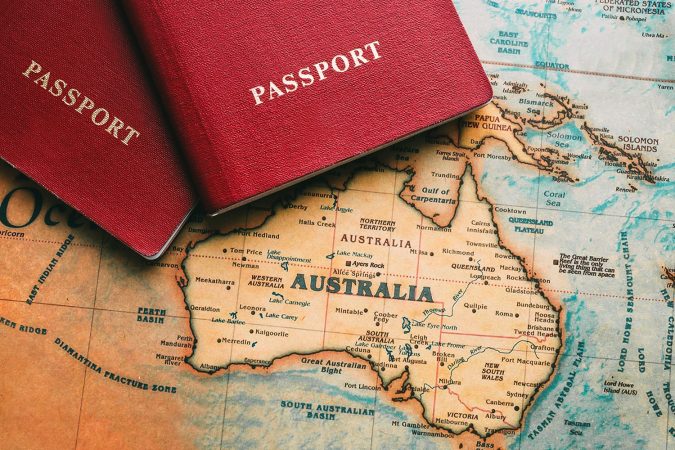
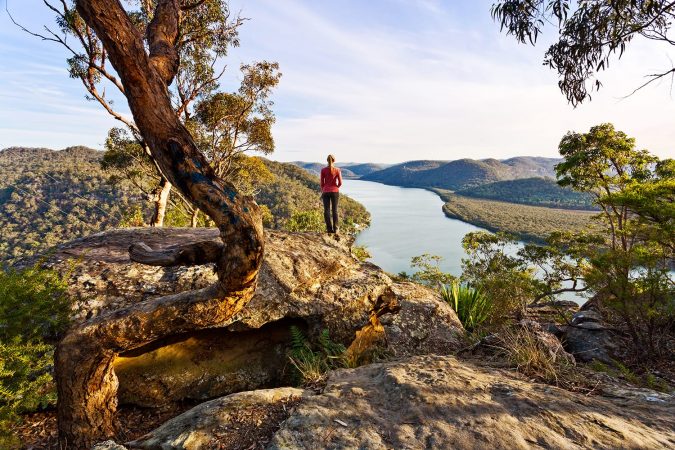
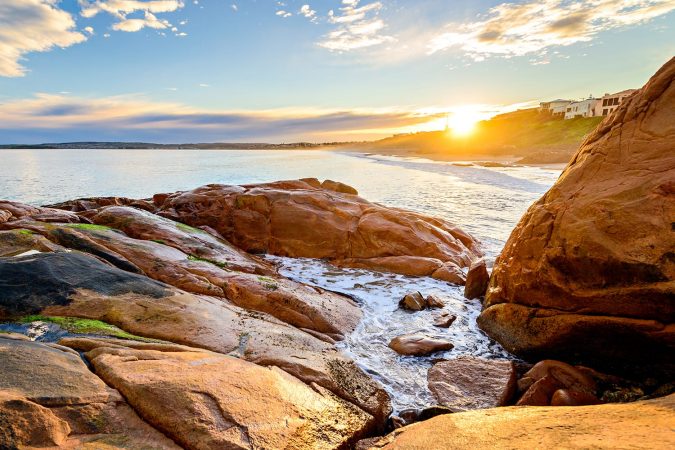
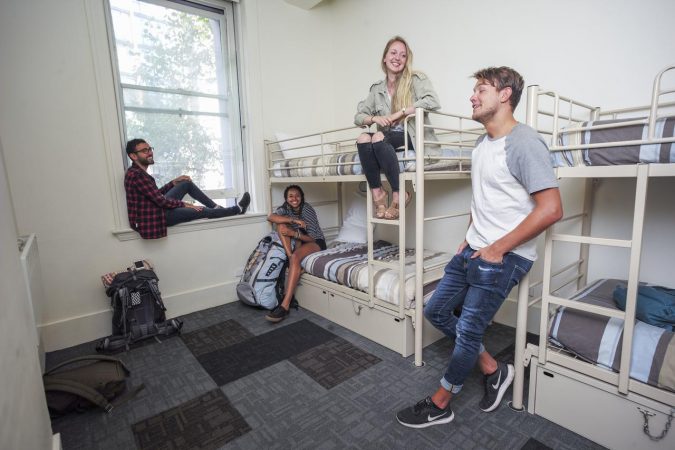
Comments